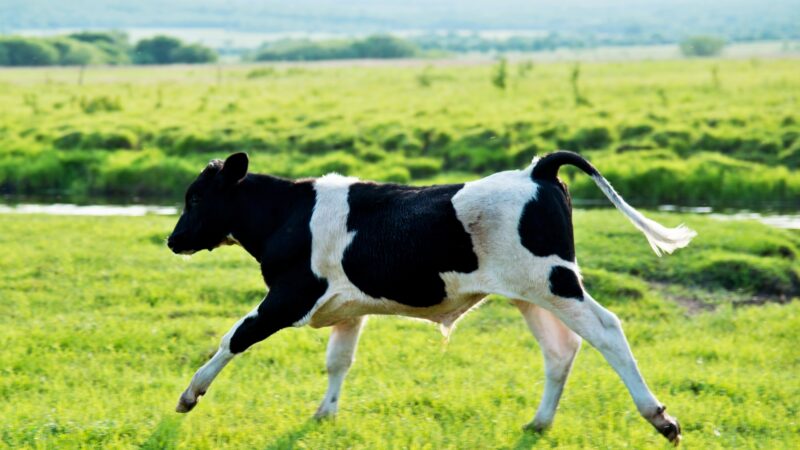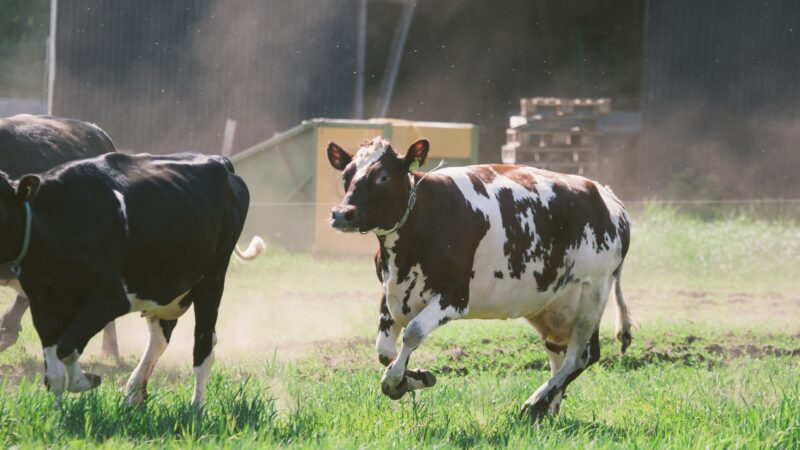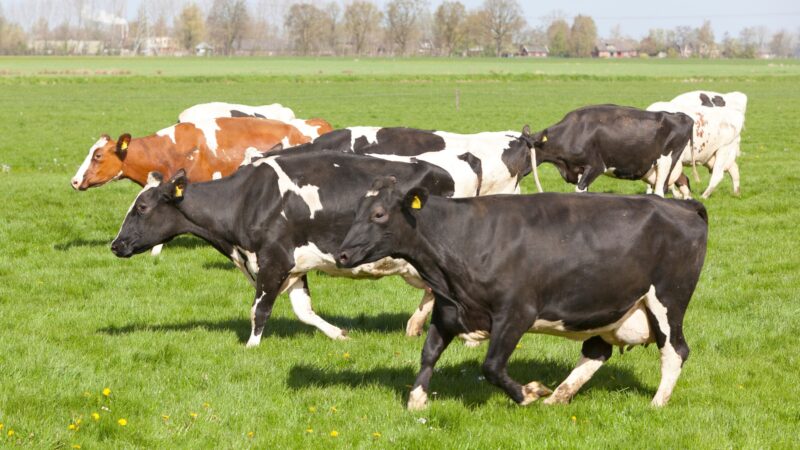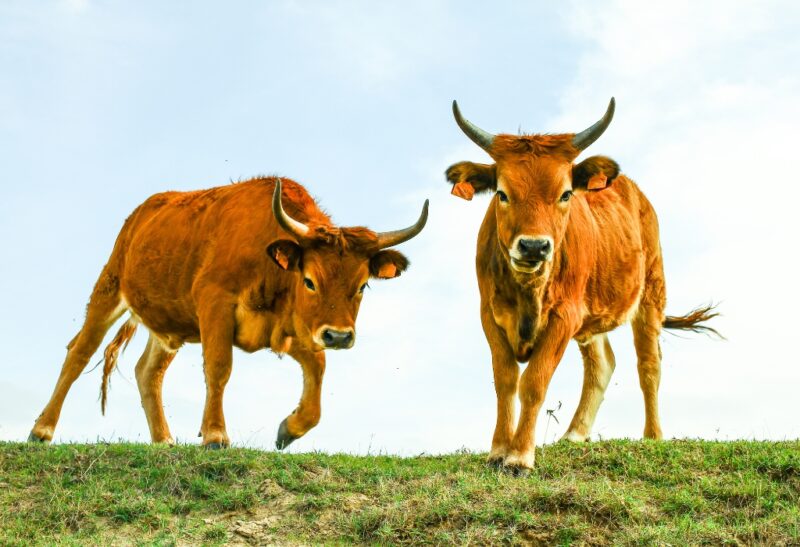Can you outrun a cow? The answer is yes, but only if you’re in good shape and can maintain a steady pace. A cow can run at speeds of up to 25 mph (40 kph) for short distances, which is faster than an average human’s top sprinting speed. However, cows cannot maintain this speed for long periods, allowing a fit human to eventually outrun them.
In this article, we’ll explore the fascinating world of bovine behavior, speed, and endurance. As a long-time farmer, I’ve had my fair share of encounters with cows and have picked up some interesting facts along the way. So, let’s dive into the mysterious realm of cows on the run.
Table of Contents
Cow Behavior

Cows are social animals that prefer to stay together in a herd. They are generally calm and docile creatures, but they can become agitated or defensive when they feel threatened. Understanding cow behavior is essential when interacting with them, whether on a farm, during a hike, or while driving through the countryside.
Can Cows Run?
Cows can run! While they may appear slow and lumbering at times, they are surprisingly quick when they need to be. Cows are naturally athletic creatures, and running is a part of their regular activities.
Are Cows Faster Than Humans?

Cows are faster than humans over short distances, but they cannot maintain their top speed for extended periods. Humans have better endurance, allowing us to outrun cows over longer distances.
How Fast Can a Cow Run?
A healthy cow can reach speeds of up to 25 mph (40 kph) in short bursts. Their speed depends on factors like age, breed, and overall health. Keep in mind that some cows might be slower, while others could be faster.
Why Do Cows Run?

Cows run for various reasons, including escaping threats, playing, and following the herd. They are naturally curious and will sometimes run towards something new or interesting.
Some reasons why cows might run include:
- Feeling threatened or scared
- Playing and socializing with other cows
- Moving with the herd to a new location
- Curiosity about their surroundings
Will Cows Chase You If You Run?
Cows are unlikely to chase you unless they perceive you as a threat to themselves or their calves. Running near cows can be risky, as it might trigger their protective instincts. It’s always best to give cows plenty of space and avoid startling them.
What to Do If a Cow Chases You?
If a cow chases you, stay calm and do not panic. Avoid making sudden movements or loud noises, and slowly back away from the cow. If possible, put a barrier, such as a fence or a tree, between you and the cow. Do not turn your back on the cow or attempt to outrun it over a short distance.
How Far Can a Cow Run?
While cows can sprint short distances at impressive speeds, their endurance is limited. They are not built for long-distance running and will tire quickly after a brief sprint.
How Long Can a Cow Run?

Cows can run at high speeds for short periods, typically less than a minute. After that, they will slow down and eventually stop to catch their breath.
How Far Does a Cow Walk in a Day?
A cow may walk several miles in a day while grazing and socializing with other cows. On average, a cow will cover around 2 to 5 miles (3 to 8 kilometers) daily.
Frequently Asked Questions
Why Do Cows Stare at You?
Cows are curious creatures and may stare at you out of interest or to assess whether you pose a threat. They rely on their vision to gather information about their surroundings, so staring is a natural behavior for them.
How Fast Can a Dairy Cow Run?
Dairy cows can run at speeds similar to other cows, reaching up to 25 mph (40 kph) for short distances. However, factors such as age, breed, and overall health can affect their speed.
Why Do Cows Run with Their Tails Up?
Cows raise their tails when they are excited, agitated, or running. A raised tail can also be a sign that a cow is about to defecate. When you see a cow running with its tail up, it’s best to keep your distance and give the animal space.
List of Sources
Animal Behavior and Restraint: Cattle. (2014). Iowa State University.
Albright, J. (2004). Why and how to read a cow or bull. University of California.
Understanding Dairy Cattle Behavior to Avoid Animal-Related Accidents on the Farm. Cornell Cooperative Extension.
